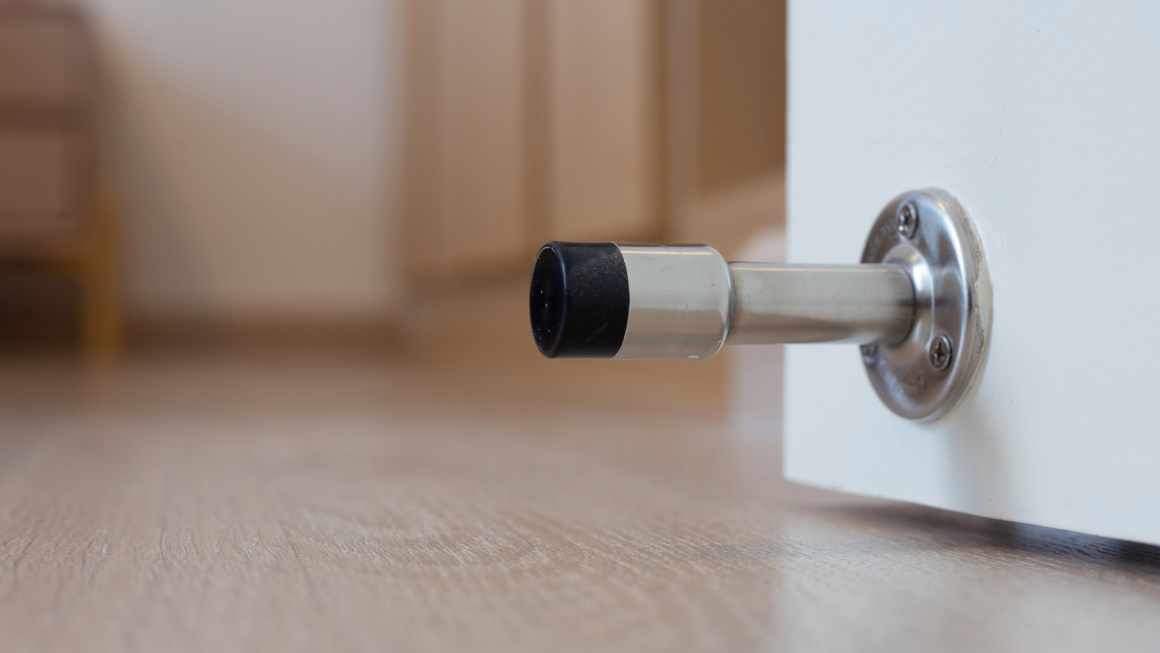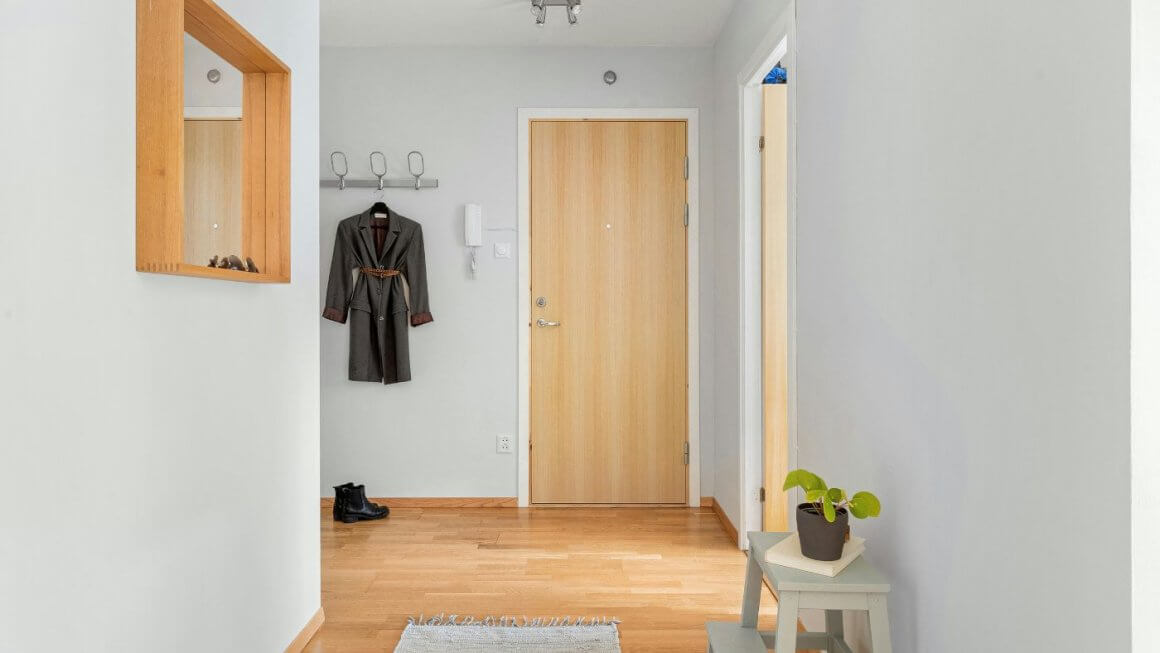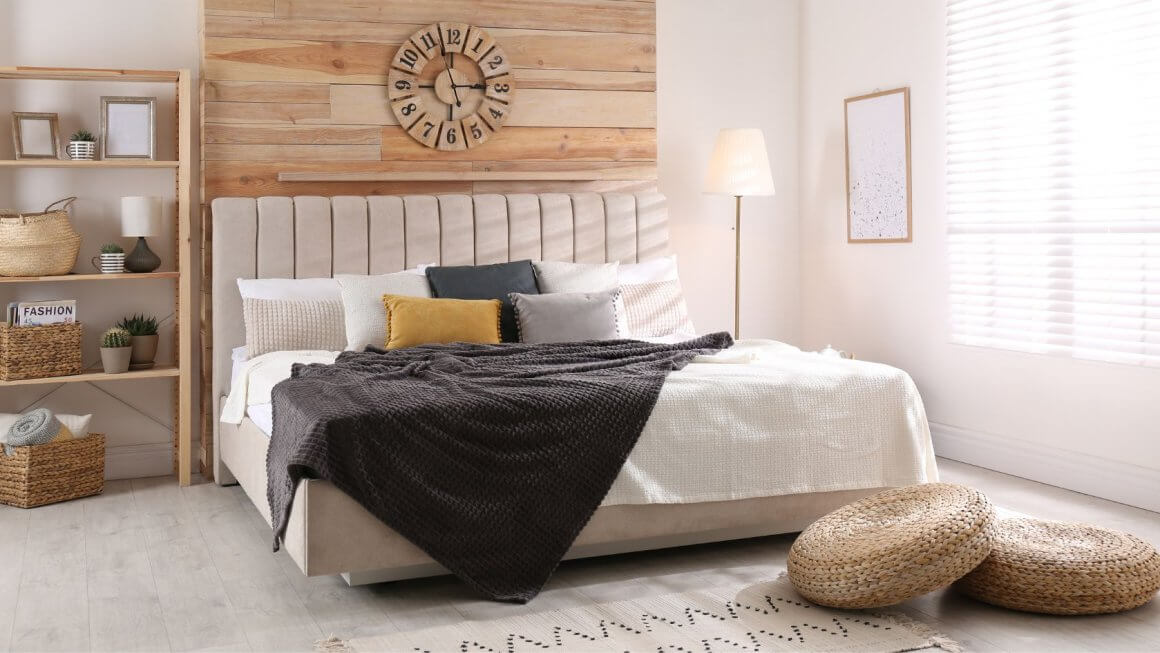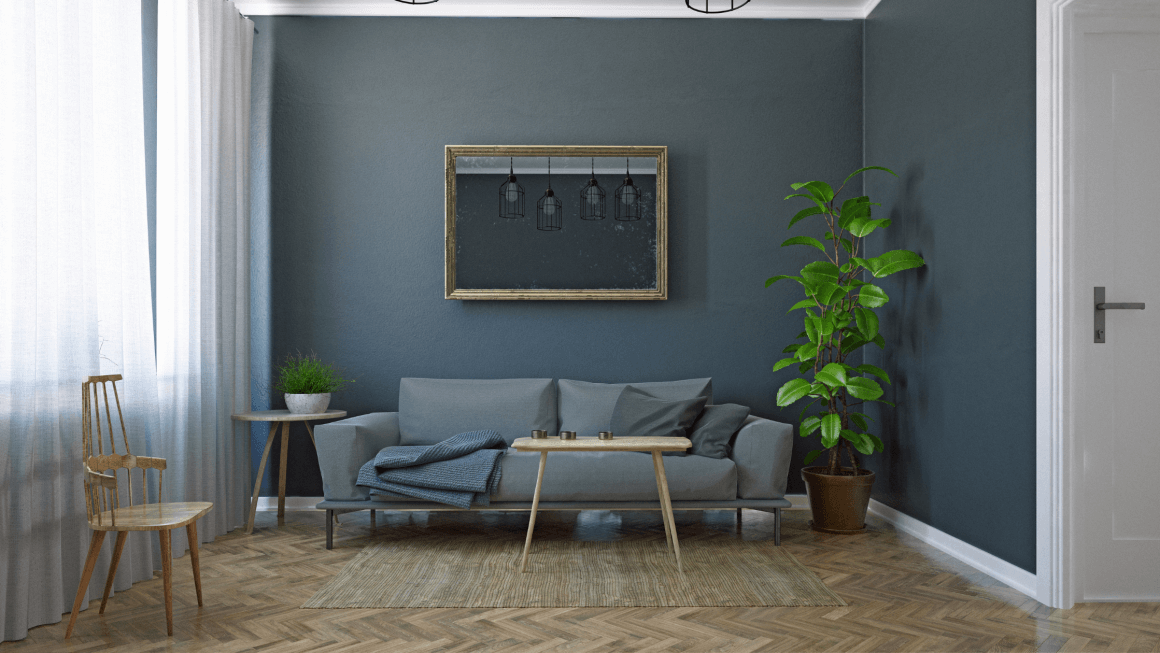Door stoppers are a small but useful addition to any doorway. They offer protection, convenience, and can even enhance the aesthetics of your space by preventing scuff marks.
But how do you fit a door frame stop yourself? This simple DIY task involves measuring, cutting, and securing the stop pieces correctly to the frame. Here’s a general guide to doorstops and why they matter.
How to install a door stop
How to Fit Doorstops Step by Step
Gather tools and materials
Tape measure, a screwdriver, pencil, miter saw (or miter box and saw) for clean cuts, hammer or nail gun, nails (or appropriate fasteners) and door stop moulding.
Measure the door thickness
To position the stops correctly, you need to know how thick the door is so you can work out where it will sit when it’s closed. Knowing this helps position the stops for a proper gap between the door and frame. It’s best to measure in a few places along the edge of the door in case it is not a uniform thickness all along the edge.
Mark the stop placement
Close the door. Then, on the jamb (frame piece) where the door handle side meets, mark the door’s thickness from the edge. Repeat on the hinge side, adding about 1.5mm to account for the door swing clearance. Similarly, mark on the head jamb (top piece) for the top stop.
Cut the stop pieces
Measure the length needed for the top stop (inside width of the frame). Next, using a miter saw or miter box, cut the ends of the stop pieces at a 45-degree angle for a clean corner fit (optional, but recommended for aesthetics).
Secure the stops
Place the top stop piece against the marked line on the head jamb and secure it with nails or fasteners. Position the side stop pieces against the marks on the jambs, ensuring a consistent gap between the stop and the closed door (around 1/8 inch is ideal to account for paint or future adjustments). Secure the side stops with nails or fasteners, checking for alignment and door clearance after each nail.
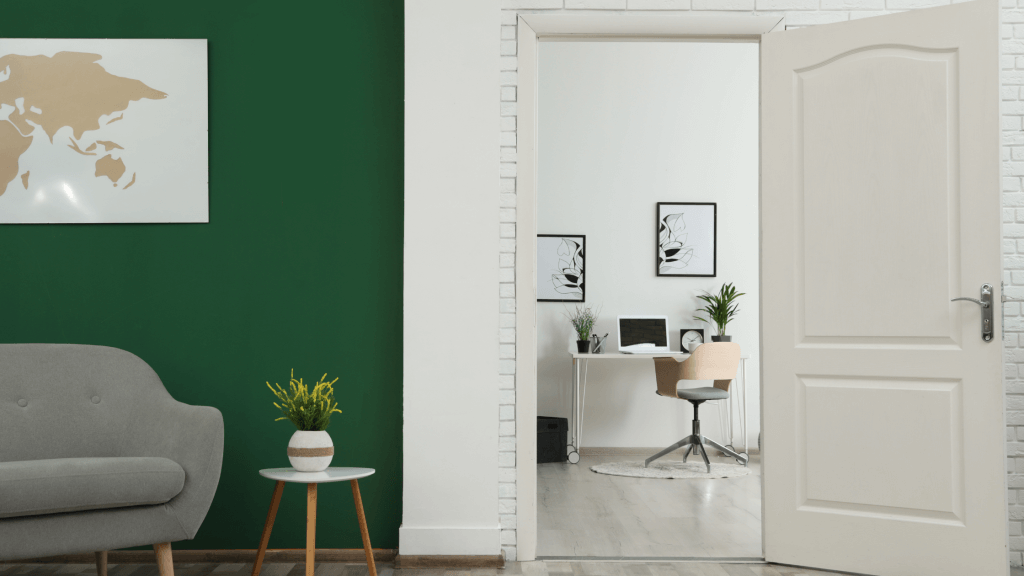
How do you fit a door frame stop successfully?
Make sure to pre-drill pilot holes to prevent the wood from splitting when nailing. You should also use a level to ensure the stop pieces are straight. Remember to close the door frequently while fitting the stops to check for proper alignment and clearance. And for a neater finish, fill any nail holes with wood filler after installation and sand before painting.
How do you install a kick down door stop?
How do you install a hinge pin door stop?
Exactly what is a door stop?
A door stop or door stopper is a tool or device used for several purposes related to doors:
Holding a Door Open
This is the most common use. A door stop is wedged against the door or floor to keep it propped open at a desired width. This can be helpful for ventilation, carrying things through the doorway, or keeping an eye on another location.
Preventing Door Slamming
Door stops placed strategically can prevent a door from swinging shut too forcefully, potentially causing damage to the door, wall, or even injury.
Limiting Door Swing
Sometimes you might not want a door to open all the way. Doorstops can be used to restrict the opening to a specific angle.

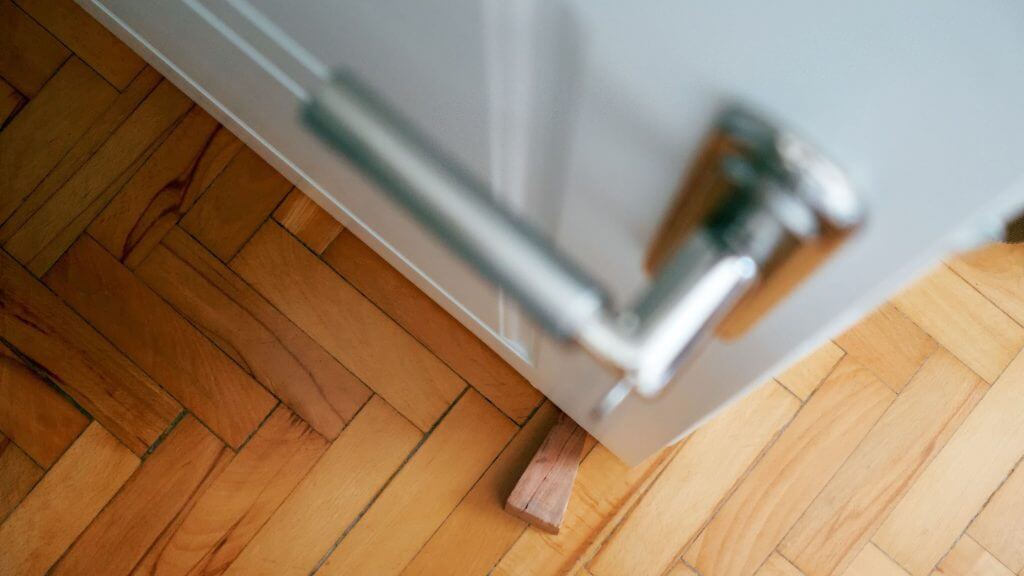

What are the different types of door stops? And Should a Door Stop Go on the Door or Wall?
A door stop can be either a separate object you use or a built-in feature of the doorway itself, all serving the purpose of controlling a door’s movement.
Freestanding Doorstops
These are separate objects, often wedge-shaped, that you place on the floor to hold the door open. They come in various materials like rubber, wood, or metal, and can be quite decorative.
Freestanding doorstops are portable wedges or stops that you place on the floor next to a door to hold it open. They are a simple and versatile option compared to fixed doorstops that require mounting. Here’s a breakdown of the most common freestanding doorstops:
Wedge-shaped
This is the classic design, with a wider base that grips the floor and a slanted top that presses against the door. These come in various materials like rubber, wood, or metal.
Dome-shaped
These have a round base and a curved top that makes contact with the door. They offer a more modern look and can be less likely to roll away.
Animal-shaped or decorative
These come in fun shapes like animals, cartoon characters, or other decorative designs, adding a touch of personality to your space.
Wood
Adds a natural aesthetic and can be quite sturdy. Some may have a felt or rubber bottom for better grip.
Metal
Provides a sleek and modern look, and can be quite durable. However, metal stops might scratch your floor if not padded underneath.
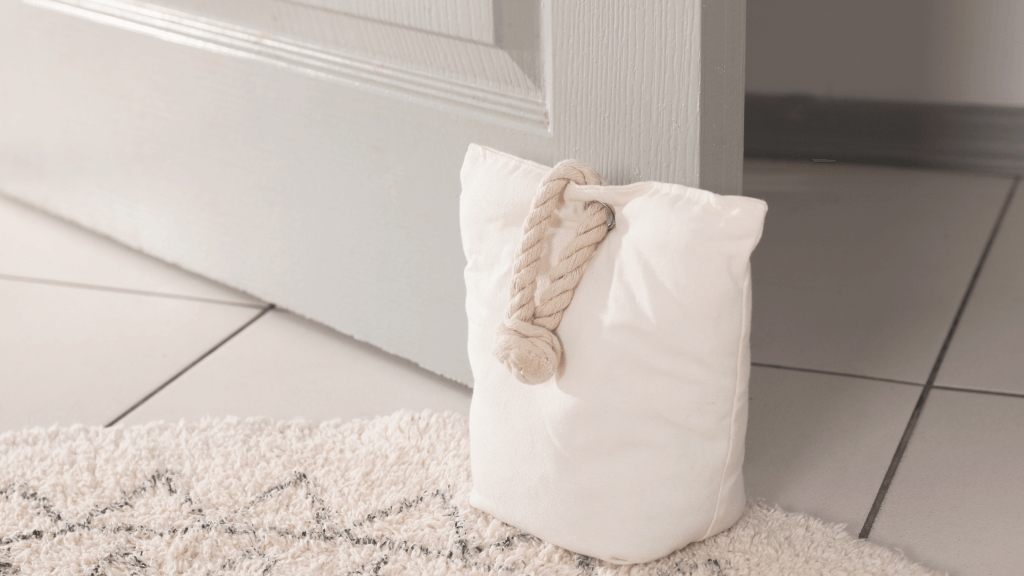
Freestanding Doorstops: What to Consider
Can be kicked out of place
Since they are not fixed, they can be easily dislodged by pets, children, or even a strong gust of wind.
May not be suitable for all surfaces
Metal stops might damage delicate floors like hardwood, while rubber ones may slide easily on carpets.
Potential Trip hazard
Especially for wedge-shaped stops, it’s important to be mindful of where you place them to avoid someone tripping.
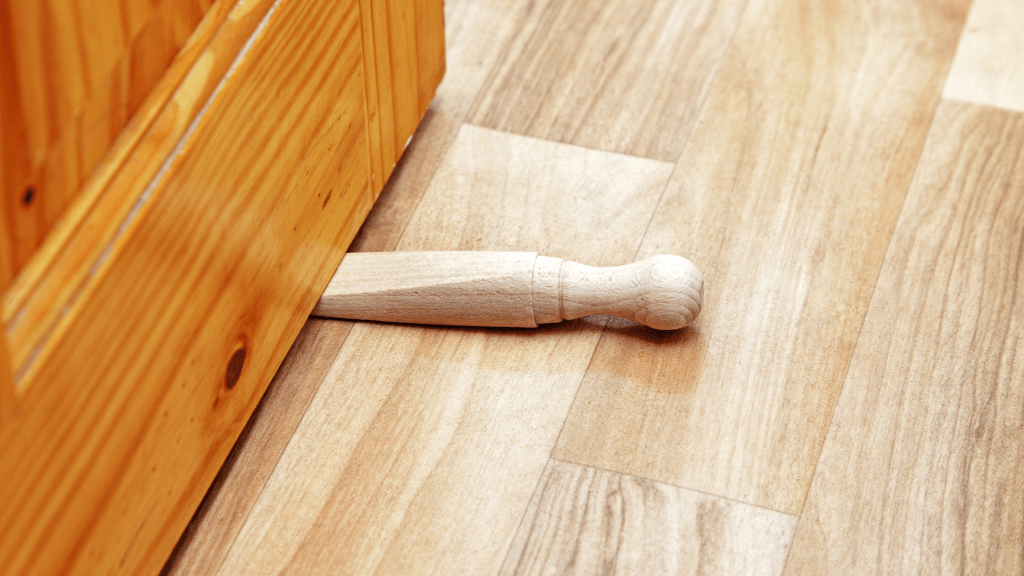
The Main Benefits of Freestanding Doorstoppers
Versatility
They can be used with any door and easily moved around to different doorways as needed.
No installation required
Simply place them on the floor for immediate use.
Portability
Easy to take with you when traveling or use in different rooms.
Variety of styles and materials
Allows you to choose one that complements your interior design or personal taste. Perfect for bringing in a little extra novelty factor or quirkiness.
Overall, this design is a convenient and affordable solution for holding doors open. They offer a variety of styles and materials to suit your needs, but keep in mind their limitations compared to fixed options.
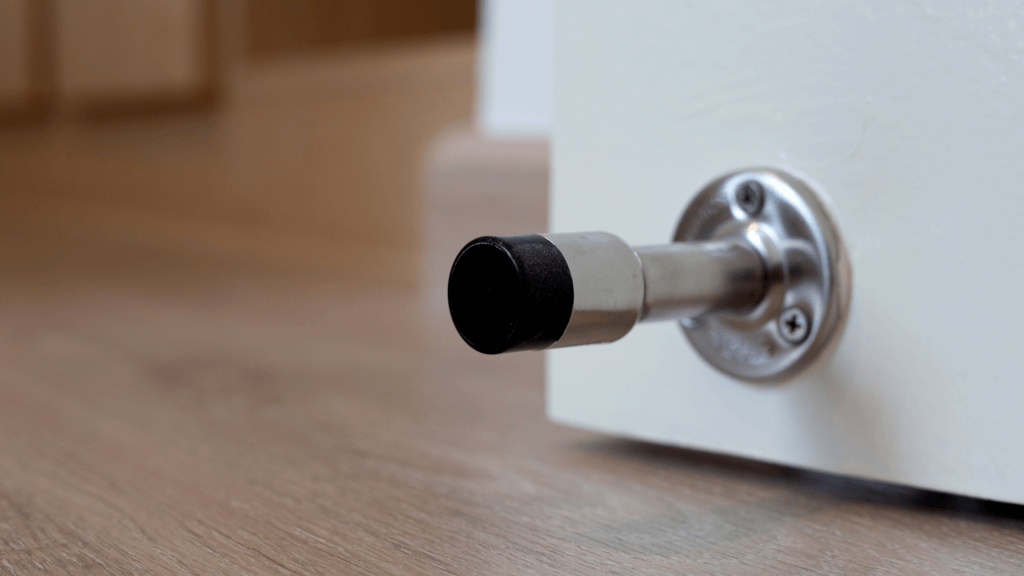
Are Fixed Door Stops Any Good?
These are mounted directly onto the wall or baseboard next to the door. They typically have a small bump or stop that the door makes contact with when fully open.
Fixed Wall Mounted Door Stops
These are attached directly to the wall surface, typically a few inches above the skirting boards. They come in various designs, from simple bumps to more elaborate decorative pieces.
Fixed Skirting Board Mounted Door Stops
These are specifically designed to be screwed or nailed onto the skirting board (also called baseboard) itself. This keeps the stop closer to the floor and can be a more discreet option.
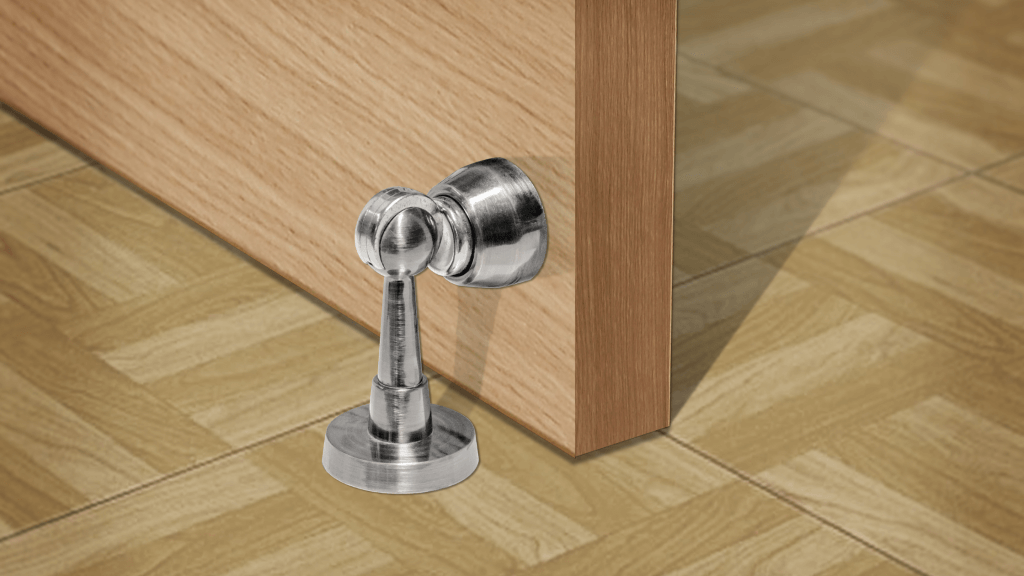
Benefits of Mounted Designs
Unobtrusive
Unlike freestanding door stops that sit on the floor, these mounted options are more streamlined and don’t create clutter.
More permanent solution
They are securely fastened, so you won’t have to worry about them getting kicked out of place or misplaced.
Variety of styles and materials
They come in various finishes like chrome, brass, or nickel, and some have decorative details to complement the style of your property.
Protects walls and doors
They prevent the doorknob or handle from hitting the wall, minimizing dents and scuff marks.
Clean lines
Especially with skirting board mounted options, they maintain a clean line along the baseboard as they blend in visually.
Do bear in mind that this design requires drilling or nailing into the wall or skirting board, so some DIY skills might be needed. It also needs to be positioned correctly to ensure the door stops at the desired point without creating an eyesore.
However, wall and skirting board mounted door stops offer a practical and aesthetically pleasing way to control door movement and protect your walls and doors.
What are Spring Door Stops For?
A spring door stop is a type of fixed door stop mounted on the wall or skirting board that uses a spring mechanism to control the door’s movement. It combines some features of both fixed and freestanding doorstops. It’s comprised of a:
Base plate: This is screwed onto the wall or skirting board.
Spring: A coiled metal spring housed within the base plate.
Buffer: A rubber or plastic tip at the end of the spring that makes contact with the door.
Prevents door damage
Like other fixed stops, it protects walls and doors from damage caused by the doorknob or handle hitting the surface.
Controlled stopping
The spring absorbs the impact of the door when it’s opened, preventing a forceful slam.
Holding open (optional)
Some spring door stops have a latch or hook mechanism that allows you to hold the door open. By pressing the latch or hook with your foot, you release the door to close.
Spring doorstops are unobtrusive and protective. They’re more streamlined than freestanding options and don’t create clutter on the floor. Plus, the design keeps the stop mechanism hidden within the base plate, offering a cleaner look.
This design offers a practical and low-profile solution for controlling door movement and protecting your walls and doors. The optional holding feature adds further convenience.
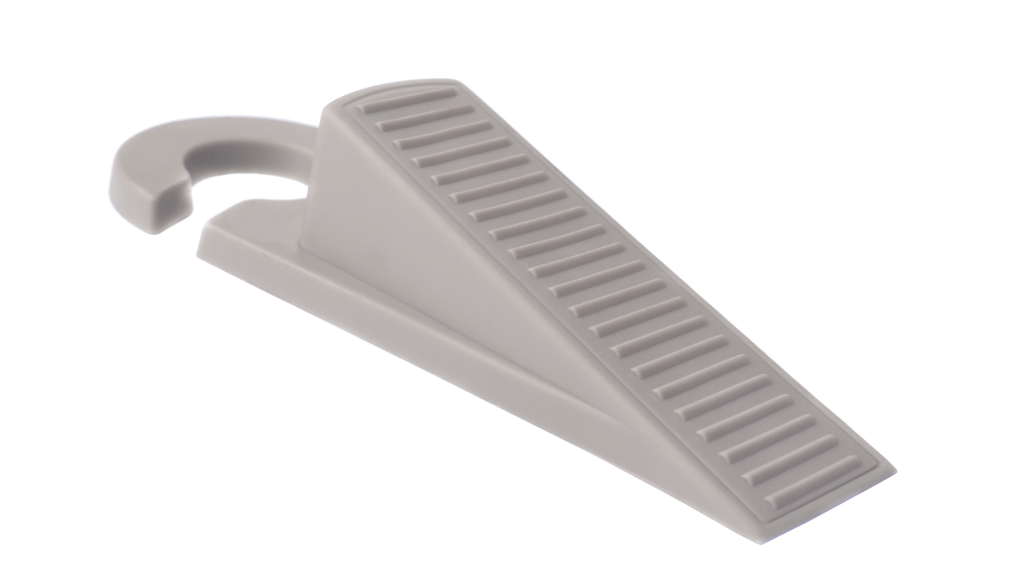
What are Rubber Door Stops Used For?
A rubber door stop is a type of freestanding doorstop made, as the name suggests, primarily from rubber. It’s a popular choice due to its functionality and affordability.
You simply place the wedge under the door to hold it open at a desired angle. Ideal for everyday use and various situations where you need a door propped open. However, they may not be suitable for all surfaces.
They’re a practical and affordable solution for holding doors open. They offer good grip and quiet operation, but keep in mind their limitations regarding stability and potential tripping hazards.
DIY Door Stopper Ideas
What Makes a Good Door Stopper?
Wall and skirting board mounted door stops are suited for all door types including solid doors. Floor fixing door stops are best suited for use with lightweight moulded doors or where there isn’t a mounting point for fixed post door stop.
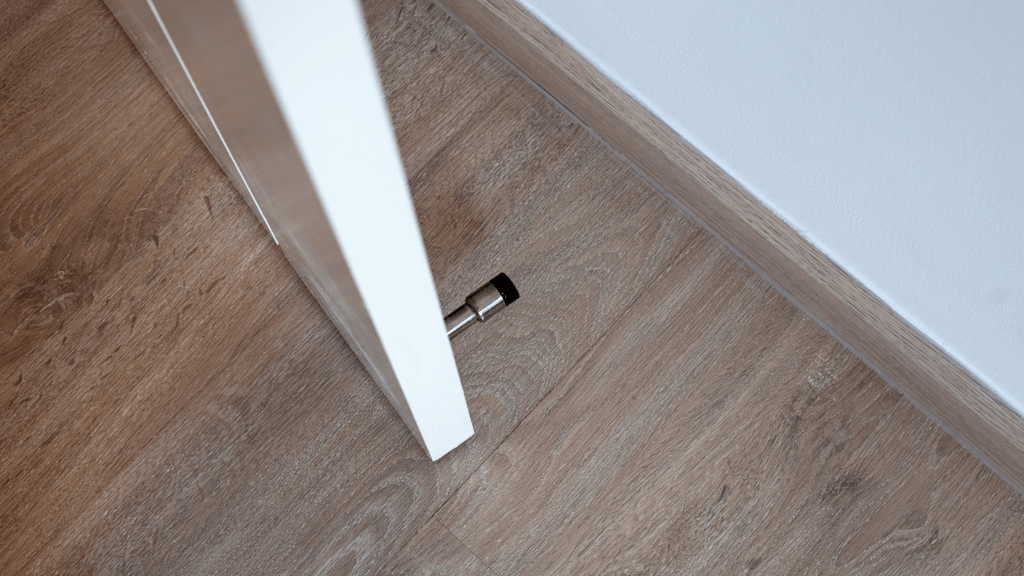
Install a Door Stop Like a Professional
Walls that stay pristine for longer. Interior doors that open smoothly and quietly. The ability to keep an eye on things in another room. Now you know how to fit a door stopper, you’ll be able experience these benefits plus plenty more. Installed a door stop successfully using our tips? Tag us in your DIY projects on Instagram and we’ll share them with our followers.



